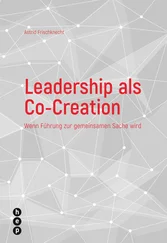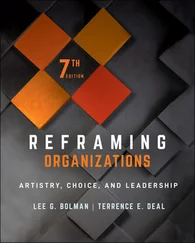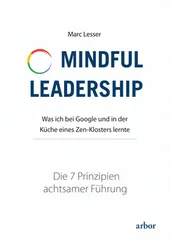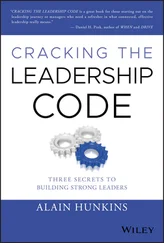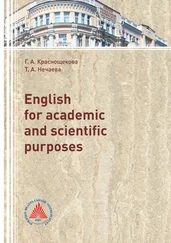One study (Hogan, Curphy, & Hogan, 1994) estimates that one‐half to three‐quarters of American managers are incompetent in the sense that their skills don't match the demands of their work; another report puts the number of underqualified managers even higher at more than 80 percent (Gallup, 2015). But the less competent people are, the more they overestimate their performance, partly because they don't know good performance when they see it (Kruger & Dunning, 1999). Skilled professionals are more apt to know when they don't know, but nonexperts often think they know when they really don't (Kahneman & Klein, 2009).
This is not to say that business can't serve as a fertile source of management ideas and innovation. Colleges and universities have some of the same elements found in almost any organization – goals, structures, administrative hierarchies, coordinating mechanisms, cultures, employees, vendors, and powerful stakeholders, to name a few. Leaders in higher education should learn from advances in other sectors whenever they can. Not every managerial wheel needs to be reinvented.
But the differences between business and higher education do matter (Birnbaum, 2001; Bowen, 2012). Higher education's distinctive combination of goals, tasks, employees, governance structures, values, technologies, products, and history makes it not quite like anything else (Altbach, Gumport, & Johnstone, 2001; Bok, 2013; Thelin, 2004). It is different first because of its academic mission – a complex and variable mix of teaching, research, service, and outreach. Creating, interpreting, disseminating, and applying knowledge through multiple means for many different audiences and purposes is exciting and significant work, but it is not easy, and outcomes are often difficult to observe and assess.
The “production process” in higher education is far more intricate and complicated than that in any industrial enterprise… . Students vary enormously in academic aptitude, in interests, in intellectual dispositions, in social and cultural characteristics, in education and vocational objectives, and in many other ways. Furthermore, the disciplines and professions with which institutions of higher education are concerned require diverse methods of investigation, intellectual structures, means of relating methods of inquiry and ideas to personal and social values, and processes of relating knowledge to human experience. Learning, consequently, is a subtle process, the nature of which may vary from student to student, from institution to institution, from discipline to discipline, from one scholar or teacher to another, and from one level of student development to another (Berdahl & McConnell, 1999, p. 71).
It is no surprise, then, that teaching and research are complex enterprises, requiring significant intellectual and financial capital. In today's world, academic leaders at all levels and in both the private and public sectors scramble to find talent, resources, donors, income‐generating projects, and tuition dollars in an increasingly competitive environment. Colleges and universities must also respond to a host of forces. They face pressures to become more accountable, businesslike, and market‐oriented in service to individuals, communities, government, and industry. They have to cope with profound and ever‐evolving changes in technology; major demographic and global shifts in student populations; formidable new competitors in virtual and foreign universities; escalating pressures to increase access, diversity, and affordability; and widespread concerns that higher education lags in giving today's citizens and tomorrow's workforce the twenty‐first‐century skills they need.
In the wake of the 2008 financial meltdown, budgets in many institutions were decimated by precipitous drops in endowments or state funding at a time when student demand for courses and services kept growing – and many institutions still have not fully rebounded from the fall. In recent decades, continuing decline in state support has steadily shifted more of the financial burden onto students, making college increasingly unaffordable for many poor and middle‐income families. The pandemic of 2020 created another dramatic blow to budgets – increasing costs while cutting revenues from students, fee‐generating services and events, and public funding.
Academic leaders are always under tremendous pressure to initiate change (Fullan, & Scott, 2009; Mintz, 2019; Selingo, 2013) and to embrace an entrepreneurial mindset in order to keep pace with rapidly evolving conditions – and they need to find a path that avoids either of two unproductive extremes. Those who move too slowly will lose touch with their markets and fall behind speedier competitors; but those who move too precipitously will sow confusion, breed discontent, and undercut their institution's traditional purpose, contributions, quality, and strengths (Newman, Couturier, & Scurry, 2004). Even when circumstances like an unprecedented pandemic force academic leaders to move quicker than they should, the results were not pretty. The fast move to 100 percent online education with campus closings from the arrival of Covid‐19 in Spring, 2020, was necessary, but still left faculty, staff, students, and families confused, angry, or unprepared for what they faced. Institutions too quick to announce the full reopening of their campuses in Fall 2020 generated predictable faculty conflict and student pushback by failing to bring key constituents along with their plans. And those who needed to reverse or modify their reopening decisions close to the start of term only added to the chaos.
Higher education's mission requires that many of its key employees be teachers and scholars whose contributions depend on their unique training, expertise, dedication, and capacity for professional judgment. As in many other specialized professions, much of their performance can be assessed only by their peers. Their expertise supports faculty claims that they are uniquely qualified to make decisions about the core teaching and research activities of the institution. Faculty thus attain levels of individual autonomy and collective power beyond most employees in other sectors. The faculty role in institutional governance varies by institution and faculty composition, but consistently creates challenges and dilemmas for academic administrators, who often find themselves in a turbulent and contested in‐between zone, chronically buffeted by the conflicting concerns, viewpoints, and agendas of faculty, students and their families, other administrators, governing boards, and a variety of important external constituents.
This governance conundrum gives rise to distinctive assets and liabilities. The same arrangements that foster individual creativity, initiative, and flexibility also buttress institutional inertia. The same safeguards and freedoms protect both the highly productive and the unfit. The same provisions that give faculty substantial control of their own affairs and contributions can lead to departments or schools in which personal and intellectual conflicts lead educated professionals to behave much like squabbling children or bullying mobs (Twale & DeLuca, 2008). Colleges and universities are centers of discovery, learning, and hope. They are also complex organizational beasts – and the work of academic leaders in taming and directing them only becomes harder as the demands increase while public support erodes (London, 2002).
A survey asked more than 500 academic leaders in Australia to provide images that capture their daily life at work (Scott, Coates, & Anderson, 2008). Among the most popular were familiar classics like herding cats and juggling. Others were more creative and idiosyncratic: trying to nail jelly to the ceiling while putting out spot fires with one's feet, hanging wallpaper with one arm in a sling, pushing a pea uphill with one's nose, rowing without an oar, and driving nails into a wall of pudding (little resistance, pretty messy, but no results). Taken together, these images add up to a familiar portrait of complicated and chaotic work in which great effort can produce scant impact. They also point to the need for understanding and for solid preparation in order to navigate the complexity and to strengthen leadership skills and resolve.
Читать дальше


